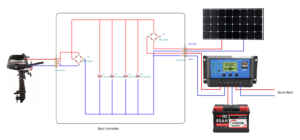Outboard motors often have an integrated alternator in the form of a charging coil, which is fed by a permanent magnet, which is also responsible for ignition. An AC voltage comes out of the charging coil, the level and power of which depends on the speed. Depending on the motor type, power can be between 30…50W.
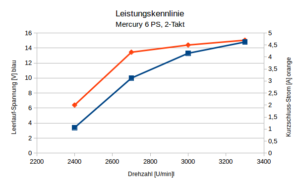
Fig.: Current and voltage characteristics Mercury 6HP, 2-stroke
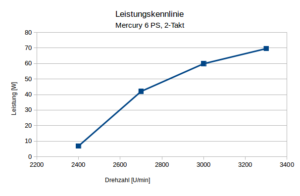
Fig.: Mercury 6PS, 2-stroke line characteristic
In order to stabilize the voltage, the simplest charge controllers are often installed that work according to the short-circuit principle. If the voltage exceeds 12V, the output voltage is short-circuited and drops to around 0V. At the next zero crossing of the rectified AC voltage the short circuit is removed and the whole function starts again. This simple functional principle dates back to the early days of motoring when there were no electronics. At that time, this was realized with magnetic charge controllers that short-circuited a contact. The mode of operation corresponded roughly to a relay.
These simple charge controllers have the ugly property of breaking down very quickly. This is often not noticed and one overcharges one's battery and in the worst case can bring it to a boil with the corresponding gas discharge. The battery is then usually damaged and must be replaced. It is even worse to use the outboard motor alternator without a battery if the charge controller is defective. A voltage of up to 30V is then fed into the on-board network, which can destroy parts of the on-board electronics.
You can now definitely replace the old charge controller with a new one, but you won't enjoy it for long because it will break again in a short time.
Fig.: Outboard power distributor (J1 supply of the alternator)
In order to permanently solve the problem, the old charge controller is completely removed and the AC voltage is converted into a DC voltage using a bridge rectifier D1 and electrolytic capacitors C1...C4. The result is a DC voltage, the level and power of which depends on the speed. This voltage is supplied to a solar charge controller, because such voltages must also be processed by solar panels. So that the current from the solar panels and the outboard motor can be processed by the solar charge controller at the same time, the bridge rectifier D2 decouples the two current sources and prevents them from feeding each other. In this case, the bridge rectifier is not used as a rectifier, but as a blocking diode. Functionally only the left two diodes of D2 are used and the right two remain unused. The fact that a bridge rectifier is used for this is due to the costs, since bridge rectifiers for power classes up to 8A are cheaper than individual diodes.
The great advantage of this circuit lies in the parameterization and monitoring of the charging function, because with most solar charge controllers the end-of-charge voltage for the respective battery type can be set individually. This prevents the battery from being overcharged. The battery is also protected against deep discharge and switches off the consumers beforehand. Both MPPT and inexpensive PWM controllers can be used as solar charge controllers. However, the solar charge controller should always be adapted to the performance data of the alternator.
Gerry from the Segeln-Forum has created circuit boards for the power distributor for a standard housing. All components are safely housed in a small DIN rail housing.
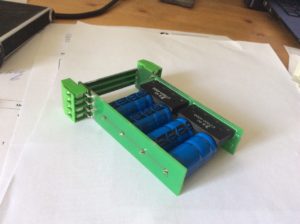
Fig.: Circuit board power distributor
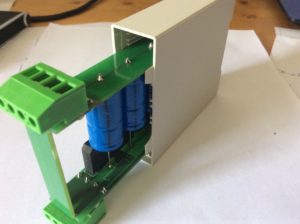
Fig.: Housing with circuit boards
Documents about the project can be found here:
GitHub: https://github.com/gerryvel/AB_NT
Discussion: Sailing Forum (German)
tips
How do I recognize when the charge controller of the outboard is defective?
To do this, the battery is disconnected from the power supply of the outboard. A digital voltmeter is used to measure the DC voltage at the voltage output of the outboard. Depending on the speed, a voltage between 6 and 14.5V should be measurable. If the voltage is clearly above 14.5V at high speed, the charge controller is defective. In most cases, voltages of up to 30V can then be measured.
Is it absolutely necessary to remove the old charge controller?
In most cases, the old charge controller does not have to be removed. There are no disadvantages. Often the shorting switch is defective and no longer works.
Can I charge the battery with the outboard motor and the solar panel at the same time?
No, this is not possible. The source that delivers the higher charging voltage always wins. The charge controller can only be charged via the outboard motor or the solar panel.
Which solar charger should I use? MPPT or PWM?
MPPT solar chargers are more efficient than PWM solar chargers. That is why they are often preferred. However, MPPT solar chargers are significantly more expensive than PWM solar chargers. For solar panels below 100W, the efficiency gain of the MPPT solar charger is not very significant. A simple PWM solar charger will usually do the trick.
